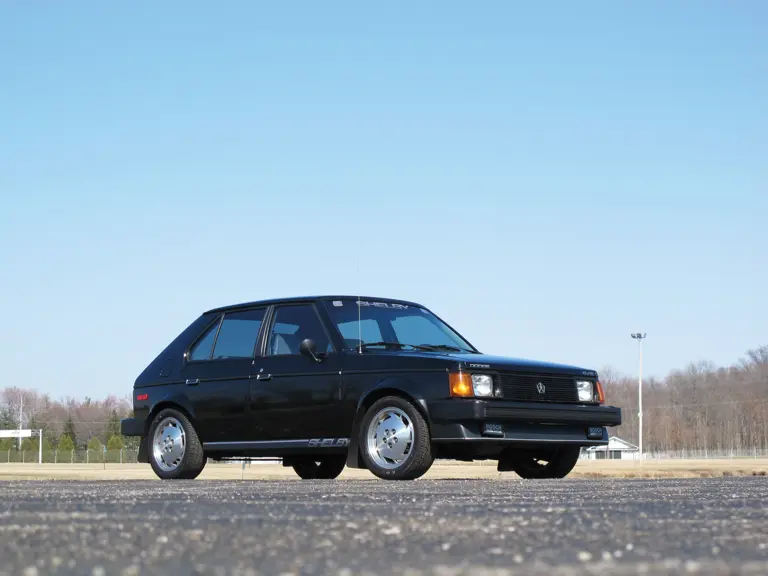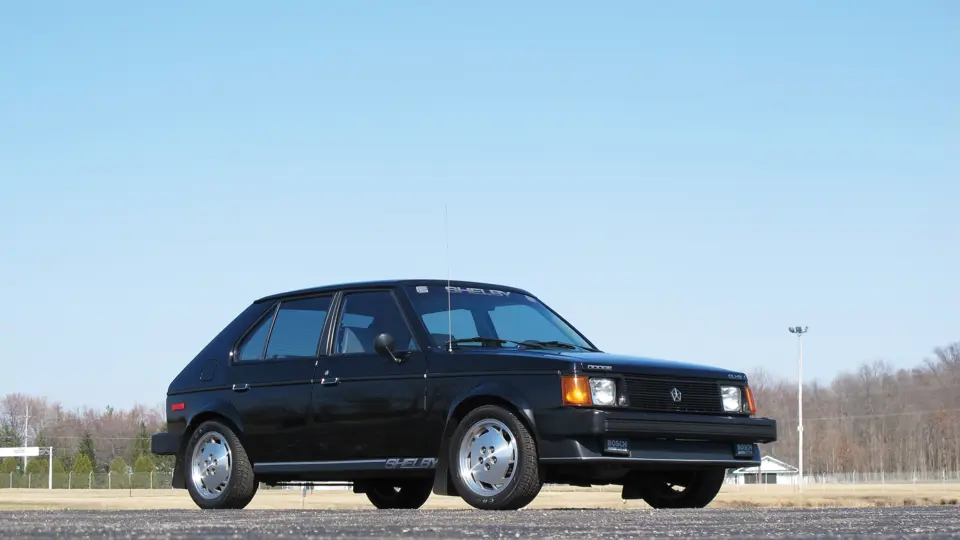 | Auburn, Indiana
| Auburn, Indiana
In the realm of performance cars, the phrase “hot hatchback” is an oxymoron… until the Dodge Omni GLH was conceived, that is. In 1984, the GLH (for “Go Like Hell”) was a breath of fresh air in an otherwise drab era of automobiles. Engine options included a massaged version of Chrysler’s 2.2-liter normally-aspirated engine for 1984, and in 1985 and 1986, a turbocharged 2.2-liter unit was offered as well. But two short years later, production was halted. The final 500 cars (all painted black, and all housing the 2.2-liter turbocharged engine), however, went to Carroll Shelby. He had other plans for these machines.
At his Whittier, California plant, those fateful 500 GLH Omnis were to receive the Shelby treatment. The engines were massaged with modified intake tracts, an intercooler, and more boost from the Garrett turbo. Results were impressive: 175-hp and 175-lb/ft of torque. Fed through a five-speed transmission, the Omni GLHS (“Go Like Hell – S’more”) was able to lay down a 6.5-second 0- to 60-mph time, and clock a quarter-mile in 14.7 seconds at 94-mph. This performance was nothing short of awesome, leaving Porsche and Ferrari owners stunned – and with a view of the GLHS’s taillights.
The performance was not limited to straight-line sprints. The GLHS was outfitted with adjustable Koni “iso-struts,” adjustable coil springs, stiffer anti-roll bars, heavy-duty power brakes, and quick ratio power steering. Skidpad lateral grip was a very healthy .88-g, and the chassis was set up well enough to out-lap Carroll’s previous masterpiece - the legendary 1966 Mustang GT 350 - around Willow Springs by two full seconds.
The GLHS received special attention to the body as well. The cars sported features such a unique front air dam and graphics package, aluminum lightweight wheels, Bosch driving lamps, and blacked-out trim. Inside, bucket seats and a leather-wrapped steering wheel and shift knob were found. The cars also received standard comfort options such as air conditioning and rear window defrost. Each of the 500 cars had a Shelby signature plate and serial number plate affixed to the dash as well.
The GLHS quickly cemented its reputation as a performer and trend-setter. As a result, the cars have become very desirable to both drivers and collectors alike. The car also helped launch a new era of forced-induction performance and set the bar for decades yet to come. The example offered here, GLHS number 189, has been very well preserved, reportedly being driven a moderate number of miles from new. The interior and engine bay are tidy and the car presents well. The car is very original and still wears its correct Goodyear Eagle VR-50 tires. Unmodified examples are increasingly difficult to find, and this car represents a great opportunity for a new owner to acquire a GLHS to enjoy for years to come.





